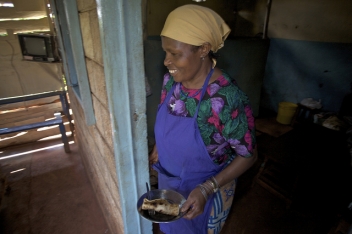 Many studies have shown that the world population is increasing at an alarming rate.
Many studies have shown that the world population is increasing at an alarming rate.
The global population will soon hit the seven billion mark and recently released projections from the UN show that by 2050, the global population could reach 8.9 billion.
This situation calls for a better understanding of population dynamics, as well as the impacts it will have and the response that is needed.
In essence, it is time for demographers and policy makers to work together in order to increase the world’s capacity to sustain an ever-increasing population.
Pressure of population on the environment
I recently went to the African Institute for Development Policy’s (AFIDEP) Population Footprint Symposium. The overall feeling was that more connected studies on population and policies are needed to deal with the consequences of rapid population growth.
The world’s older population is also on the rise, but more specifically in developing countries. The World Health Organisation has reported that around 70% of older people live in low to middle-income nations.
Population pressure has numerous effects on the environment and economic development in general. Large population sizes put strains on employment rates, household incomes, as well as water, sanitation and health services. Population growth and change also has a direct influence on some issues like resource allocation. We need, therefore, to have strong evidence to influence policy in these areas.
Older people the cause of climate change?
Some people at the conference were also saying that rising numbers of older people will also have consequences. For example, strains on pension systems, increased demands for healthcare and a bigger need for specialised long-term care.
We also looked at the intergenerational tension which can be caused by global population ageing. Some environmental youth leagues, like Kenya-based Tunza, are pointing the finger at older generations for the deterioration of the climate and environment (Tunza also supports youth environmental initiatives, awareness strategies, and other educative programmes).
Indeed, some say that more processes and policies like the Kyoto protocol (which calls for a percentage reduction of carbon emissions from developed nations) should be established to hold older generations accountable for their footprint.
The reality of how older people are affected by climate change
However, in places like Kenya, older people who live in rural regions are the worst hit by climatic changes. People who are affected by droughts and floods, also have the fewest resources to deal with and adapt to these changes.
Older people are also affected because of increasing poverty levels and the responsibilities they have of caring for their grandchildren. Many live in marginalised parts of the country that have been affected by the migration of younger generations to cities in search for jobs. And with 40-60% orphaned children in east and southern Africa supported by grandparents, there is every need to consider these populations.
I came away from the conference with a sense that there is a need for research to create initiatives to help older people deal with the climate change. This integration of research, cross-cutting various disciplines and governmental sectors, will ensure that the older people have a safety net and thus better quality of life. Better targeting and prioritising of older people’s issues is paramount in such debates.
Read more about our work on climate change
